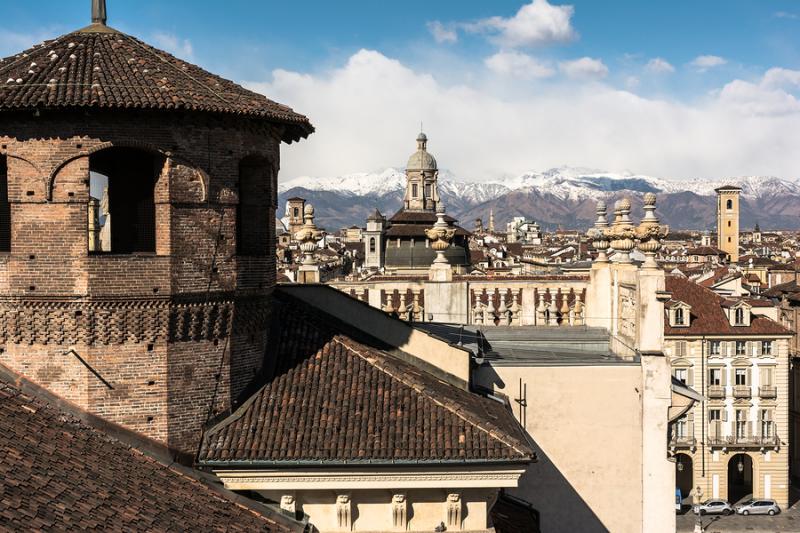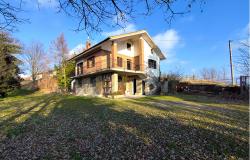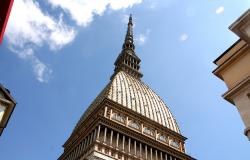In 1562, Emanuele Filiberto, Duke of Savoy, moved his capital across the Alps from Chambéry (present-day France) to Turin. It was during this time that Turin, still very much a medieval city, began to take on its distinct Baroque character. Keen to demonstrate the House of Savoy’s power, the Duke and his successors commissioned some of the best architects of the day to build many opulent palaces, residences and hunting lodges in the city and the surrounding countryside.
After the unification of Italy in 1861 and the Savoy court’s relocation to the newly proclaimed capital in Rome in 1870, some of these architectural marvels fell into disuse in the late 19th and 20th centuries. Turin’s role as a former capital was largely forgotten and the city became better known as the centre of the country’s automobile industry. In 1997 though, UNESCO deemed fourteen former royal abodes in the region of Piedmont as worthy of inclusion in its World Heritage List. A series of restoration projects were also undertaken to bring back some of the neglected buildings to their former glory. Now all completely restored and open to the public, here is our guide to visiting seven former Savoy residences, in the city and its immediate surrounds.
1. Palazzo Reale (Royal Palace)
The obvious starting point for this guide would have to be the Royal Palace, situated in Piazza Castello. Located strategically near the city’s old Palatine and Pretoria gates, this former bishop’s residence quickly became the city’s main seat of power after Duke Emanuele Filiberto transferred the capital of his Duchy to Turin in 1562. It underwent several renovations and extensions from the 16th to the 19th centuries, such as the redesign of its façade in 1658 and the addition of a chapel to house the Shroud of Turin in 1694. It is also notable for its impressive interiors, including the Scala delle Forbici, a staircase designed by the architect Filippo Juvarra in the early 1700s and its gallery of lavish murals by the Viennese painter Daniel Seiter in the late 1600s. The building became the property of the newly-proclaimed Italian republic in 1946 and since then, has been a museum.
Palazzo Reale, Piazzetta Reale, 1, 10122 Turin
Opening hours: 8.30 – 19.30 (every day except Monday), Tel. 011 436 1455

2. Palazzo Madama
Also located in Piazza Castello is Palazzo Madama, a striking building which combines elements from Medieval, Baroque and Neoclassical architecture. Built on the remains of the ancient Roman gate that enclosed the settlement of Augusta Taurinorum (the Latin name from which Turin is derived), the gate was enlarged into a square-shaped castle by the ruling Acaja family in the 14th and 15th centuries. In 1637, Christine Marie of France, regent of Carlo Emanuele II, chose it as her personal residence and had it redesigned. The building got its current name 60 years later, when another regent, Marie Jeanne of Savoy, chose to reside in it. Known as Madama Reale, Marie Jeanne commissioned Filippo Juvarra to redo its façade in the Baroque style. Only one side was completed though and, for this reason, the building’s medieval towers remain visible. After 1721, Palazzo Madama was used as a royal art gallery, senate and high court. Today, it is home to the city’s Museo Civico d'Arte Antica, which houses a large fine and decorative arts collection with examples dating from the Middle Ages to the 1700s.
Palazzo Madama, Piazza Castello, 10122 Turin
Opening hours: 11.00 – 19.00 (every day except Tuesday)
Tel.: 011 443 3501

3. Palazzo Carignano
Located in nearby Via Accademia delle Scienze is Palazzo Carignano, a splendid Baroque building with a distinct rounded façade. Construction on this palazzo began in 1679 when Emanuele Filiberto, Prince of Carignano (the Carignanos were a cadet branch of the Savoys) and his French wife Marie de Bourbon commissioned the architect Guarino Guarini to design a suitable residence for them. It was the birthplace of notable Savoy monarchs, such as Carlo Alberto in 1798 and Vittorio Emanuele II (Italy’s first king) in 1820. In 1848, after Carlo Alberto conceded a constitution to his subjects in the Kingdom of Sardinia, the palazzo became home to the kingdom’s parliament. It also served the same purpose for a brief period when Italy was unified in 1861. Today, it is home to the city’s Museo del Risorgimento.
Museo del Risorgimento, Via Accademia delle Scienze, 5, 10123 Torino
Opening hours: 10.00 – 18.00 (every day except Monday)
Tel.: 011 562 1147

4. Castello del Valentino
Heading in a south-east direction towards the western banks of the River Po is the Castello del Valentino. On the advice of the Venetian architect, Andrea Palladio, Emanuele Filiberto of Savoy bought the castle soon after transferring his capital to Turin. The origin of the castle’s name appears to derive from a nearby church which was venerated for being home to relics of Saint Valentine. The castle owes its current form to Marie Jeanne (Madama Reale), the regent of Vittorio Amedeo I, who lived there from 1633 to 1660. She had it redesigned by father and son architects Carlo and Amedeo di Castellamonte. After falling into a long period of disrepair, renovations were undertaken in 1860 after being selected as the site of the engineering faculty of Turin’s Polytechnic University. Now home to the university’s architecture faculty, it is open to the public on the first and third Saturday of the month. Please note that booking 8 days in advance is essential.
Castello del Valentino, Viale Pier Andrea Mattioli 39, 10126 Turin
Open first and third Saturday of the month, guided tours lasting one hour start at 10.00 and 11.30. Bookings essential.
Tel.: 011 090 6655

5. Villa della Regina
Across the River Po and nestled in the green hill overlooking the city is Villa della Regina. Originally designed by the architect and military engineer Ascanio Vitozzi for the PrinceCardinal Maurice of Savoy, the building project was passed over to the architects Carlo and Amedeo di Castellamonte in 1615 after Vitozzi’s death. Built as a private villa, it had its own vineyard. After losing his brother Vittorio Amedeo I, his sister-in-law Christine Marie of France became regent on her son’s behalf. As a result of his opposition to the regency, he fled to Spain. From 1637 to 1868, the villa passed through the hands of a variety of noble women, including Anne Marie d'Orléans, wife of Vittorio Amedeo II in 1684. Most of the present décor from the villa dates to her lifetime. The villa began to be referred to as Villa della Regina (meaning "Villa of the Queen")in this period too. In 1868, Victor Emmanuel II donated it to the Institute of the Army's Daughters. During the Second World War, it sustained considerable damage from Allied bombardments and fell into a state of neglect and disrepair. In 1994, the villa became state property and underwent a ten-year long restoration period which included bringing the vineyard back to life. The first harvest of sparkling-red Freisa wine took place in the autumn of 2008.
Villa della Regina, Strada S. Margherita 79, 10131 Turin
Opening hours: 10.00 – 17.00 (every day except Monday)
Tel.: 011 819 4484

6. Reggia di Venaria Reale (Palace of Venaria)
And just in case you fancy a quick trip outside the city, there’s also the Palace of Venaria which is located 8 kilometres northwest of Turin. Initially designed by architects Amedeo di Castellamonte and Michelangelo Garove in 1675, and from 1706, by Filippo Juvarra, their task was to create a lavish base for the Duke’s hunting expeditions north of Turin. The palace’s name itself derives from the Latin venatio regia, meaning ‘royal hunt’. Work on this enormous site was never entirely completed due to a succession of wars between the Duchy of Savoy and France. Stupingi eventually became the Savoys preferred hunting lodge and, during the Napoleonic wars at the turn of the 19th century, French troops converted the site’s buildings into barracks. The ornate gardens surrounding them were destroyed to create a training ground. It continued to serve military purposes after the fall of Napoleon and was used by the Italian army until 1978, when the Italian Ministry of Culture bought the complex. Often dubbed Turin’s Versailles, the now fully-restored complex features some impressive sites, including two architectural masterpieces by Filippo Juvarra, the Grand Gallery and the internal domed Church of Sant’ Uberto.
Palace of Venaria, Piazza della Repubblica 4, 10078 Venaria Reale (TO)
Opening hours: 10.00 to 16.00 (Tuesday to Thursday); 10.00 to 19.00 (Friday, Saturday and Sunday); Monday closed. Tel.: 011 499 2333

7. Palazzina di caccia di Stupinigi (Hunting Lodge of Stupingi)
Finally, there’s the Hunting Lodge of Stupinigi, which is located in the town of Nichelino, 10 kilometres southwest of the city. Built on the site of an old castle, which Emanuele Filiberto claimed as his own after transferring the Savoy capital to Turin in 1562, the surrounding land quickly became a favoured spot for royal hunting expeditions. In 1729, Vittorio Amedeo II commissioned Filippo Juvarra to design a new hunting lodge in place of the old castle and the first formal hunt took place two years after works began. The palazzina and its gardens continued to be extended in the successive reigns of Carlo Emanuele III and Vittorio Amedeo III. In addition to being used as a hunting lodge, Stupinigi was often chosen by members of the royal household for celebrations and dynastic weddings. Notable features of the hunting complex include the décor of the lodge’s interiors which were painted by a team of Venetian decorators and the bronze stag perched at the apex of its central dome. Today, Stupinigi houses a museum of arts and furniture, many of which are original to the palazzina. The surrounding woods are now a protected oasis or parco naturale where visitors can admire rare plant species and local wildlife.
Hunting Lodge of Stupingi, Piazza Principe Amedeo 7, 10042 Nichelino (TO)
Opening hours: 10.00 – 17.30 (Tuesday to Friday); 10.00 – 18.30 (Saturday and Sunday); Monday closed. Tel.: 011 358 1220















